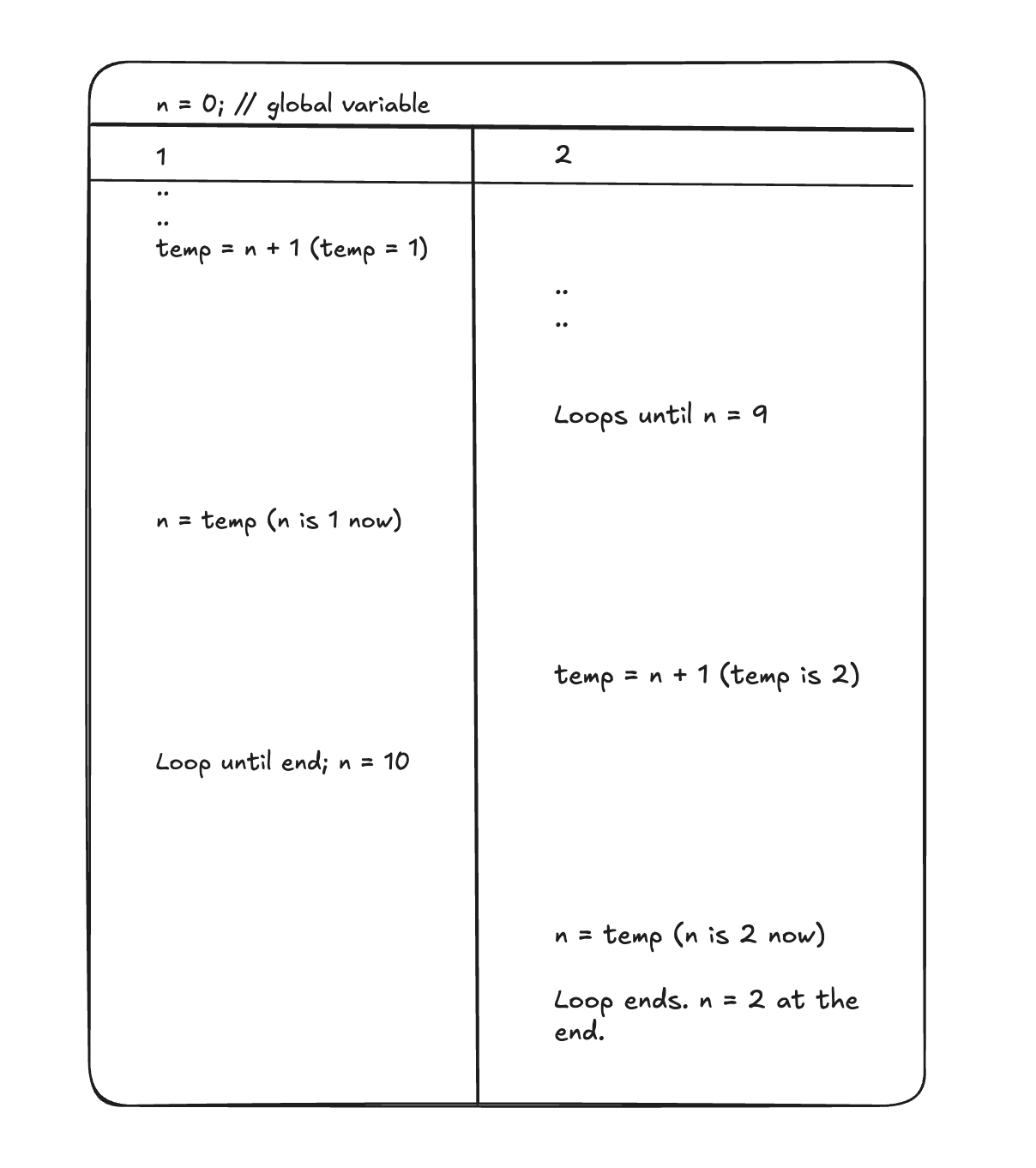When the Simplest Concurrent Program Goes Against All Intuition
Jan 13, 2025
I came across a fascinating and surprising aspect of a seemingly simple concurrent program when run on a model checker. Consider this:

If we run P and Q concurrently with ‘n’ initialized to zero, what could be the lowest value of ‘n’ when the two processes finish executing their statements on a model checker? Can a model checker also help us find the extreme interleaving that produces this lowest value of ‘n’?
I thought the final value of ‘n’ would be between 10 and 20. What do you think? Take a guess.
I came across this in Ben-Ari’s book on the SPIN model checker [1]. He said he was shocked to discover an extreme interleaving that set the final value of ‘n’ to 2. I was shocked as well—the outcome completely defied my intuition.
To see this in action, we could write a simple program in SPIN and claim that there is a computation where the value is 2. We can obtain this computation automatically by adding the assertion assertion (n > 2) at the end of the program and running a verification. SPIN searches the state space, looking for counterexamples.
Here is the program in PROMELA (a simple language used for writing modes in SPIN) followed by the trail that shows the extreme interleaving (statements in PROMELA are atomic):

When I ran this, the error appeared:

You can check out the complete interleaving trail in this file. I have never seen an interleaving this extreme.
I tried to draw the illustration of the trail and here is a rough summary (though you should check out the above trail, it’s not very long):

Process 1 sets ‘temp’ to 1, and then Process 2 is scheduled and continues executing until ‘n’ is set to 9. At this point, Process 1 takes over and sets ‘n’ to 1. Process 2 is then scheduled again, setting ‘temp’ to 2 (because Process 1 had just set ‘n’ to 1). Process 1 resumes execution and exhausts the loop. Finally, Process 2 executes once more and, using the value it had set for temp (which was 2), sets ‘n’ to 2.
After seeing this, I wondered: Is it possible to observe a computation in practice where ‘n’ is set to 2? I think it’s highly unlikely to create such a computation in practice. A Go expert shared this following code with me, which limits execution to one thread and explicitly reschedules operations. When you run this Go program, the value of ‘n’ is sometimes 11, sometimes 10, but never less than 10.
package main
import "runtime"
func main() {
runtime.GOMAXPROCS(1)
n := 0
done := make(chan bool)
for range 2 {
go func() {
for range 10 {
runtime.Gosched()
t := n + 1
runtime.Gosched()
n = t
}
done <- true
}()
}
<-done
<-done
println(n)
}
Anyway, I found it not only counterintuitive but fascinating, even though we may not encounter it in practice. So, I thought I should share it.
I wonder if it’s possible to create this computation in any other way, or a computation with the value of ‘n’ lower than 10?
This one surprised me. What’s the simplest concurrent program that has surprised you the most?
References:
- Principles of the Spin Model Checker by Mordechai Ben-Ari.